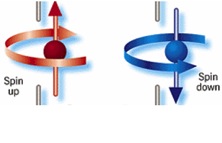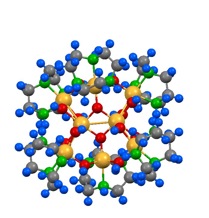Researchers use high magnetic fields to suppress decoherence, paving the way for quantum computing
July 21, 2011

Quantum mechanics states that matter can be in more than one physical state at the same time. (credit: University of British Columbia)
Researchers at the University of British Columbia (UCB) and the University of California Santa Barbara (UCSB) have made a major advance in predicting and suppressing environmental decoherence in a large molecule.
The decoherence problem
Quantum mechanics states that matter can be in more than one physical state at the same time — like a coin simultaneously showing heads and tails. In small objects like electrons, physicists have had success in observing and controlling these simultaneous states, called “state superposition.”
However, larger, more complex physical systems appear to be stuck in only one consistent physical state because they interact and “entangle” with other objects in their environment. This entanglement makes these complex objects “decay” into a single state — a process called decoherence.
Quantum computing’s potential to be exponentially faster and more powerful than any conventional computer technology depends on switches that are capable of state superposition — that is, being in the “on” and “off” positions at the same time. Until now, all efforts to achieve such superposition with many molecules at once were blocked by decoherence.
Using high magnetic fields to suppress decoherence

Iron-8 molecule (credit: University of British Columbia)
“For the first time we’ve been able to predict and control all the environmental decoherence mechanisms in a very complex system, in this case a large magnetic molecule called the ‘Iron-8 molecule,'” said Phil Stamp, UBC professor of physics and astronomy and director of the Pacific Institute of Theoretical Physics.
“Our theory also predicted that by applying high magnetic fields, we could suppress the decoherence, and push the decoherence rate in the experiment to levels far below the threshold necessary for quantum information processing.”
UCSB researchers prepared a crystalline array of Iron-8 molecules in a quantum superposition, where the net magnetization of each molecule was simultaneously oriented up and down. The decay of this superposition by decoherence was then observed in time — and the decay was spectacularly slow, behaving exactly as the UBC researchers predicted.
The investigation suggests that by optimizing the temperature, magnetic field, and nuclear isotopic concentrations, the environmental decoherence time can be extended up to about 500 microseconds, with a decoherence quality factor of ~6 × 107.
Ref.: S. Takahashi, et al., Decoherence in crystals of quantum molecular magnets, Nature, 2011; [DOI: 10.1038/nature10314]